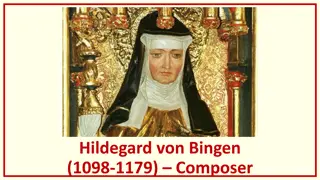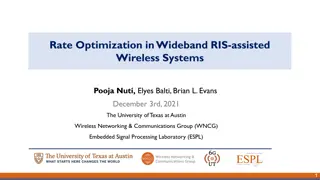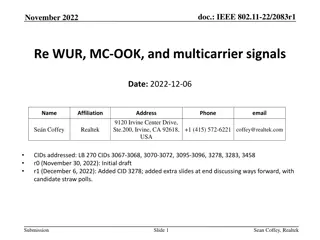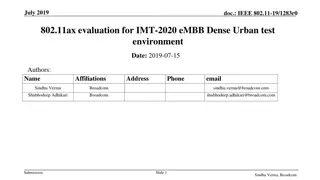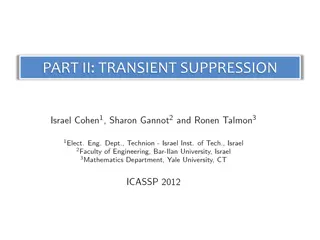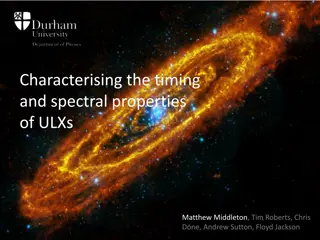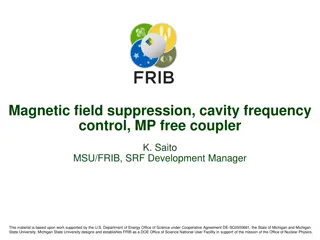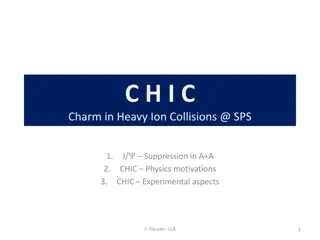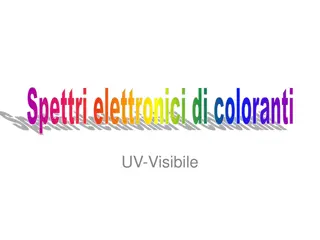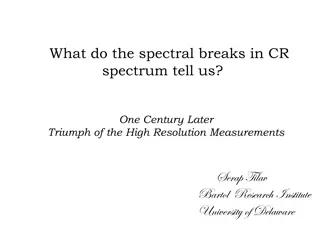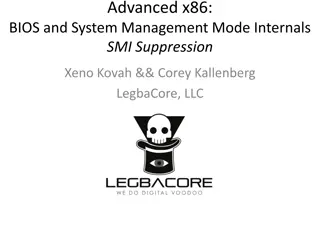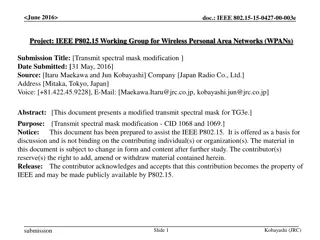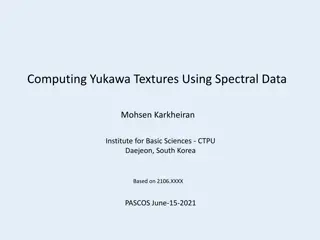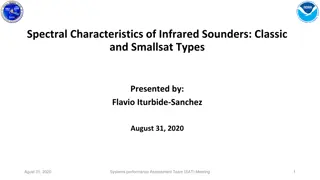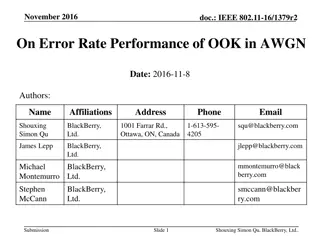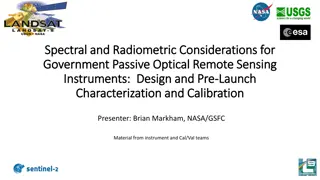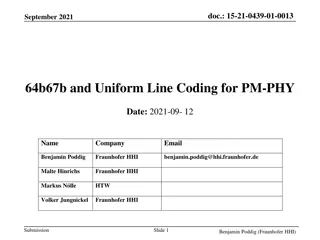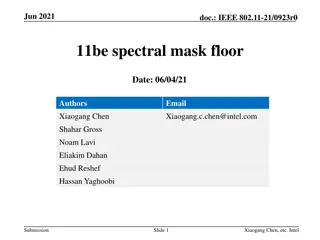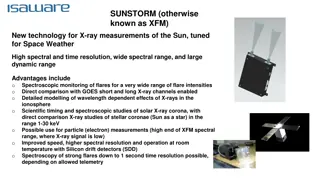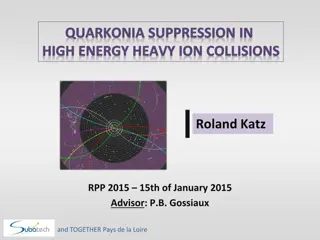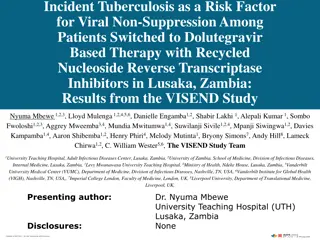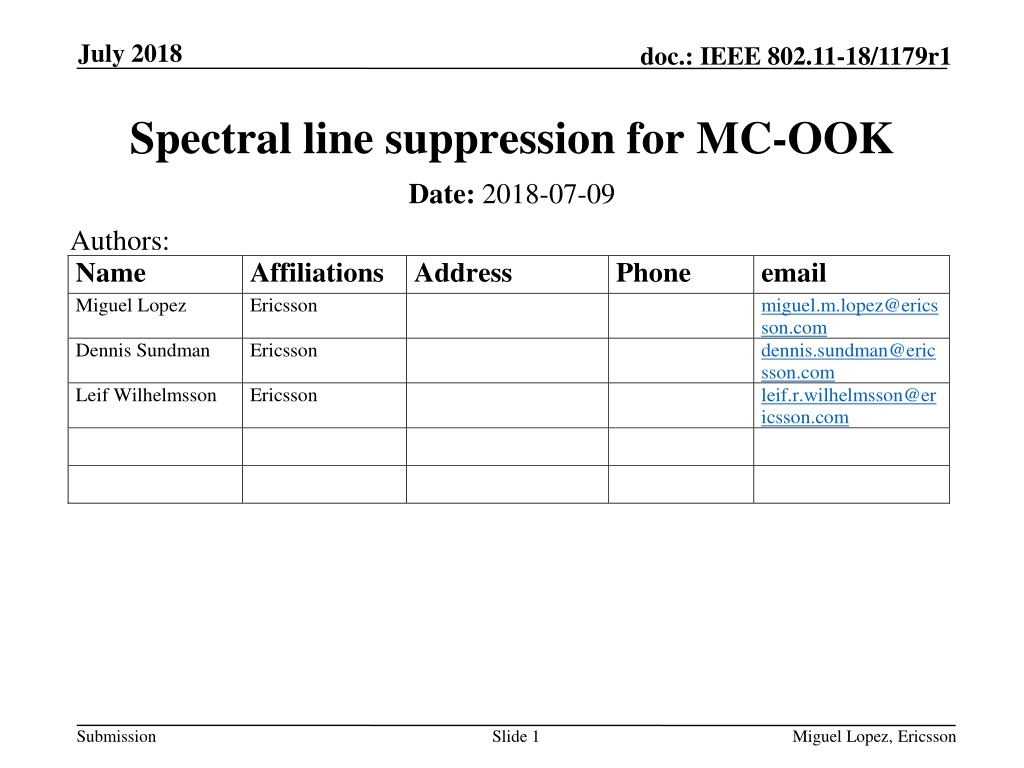
Spectral Line Suppression for MC-OOK in IEEE 802.11-18
Explore methods to suppress spectral lines in MC-OOK signals to improve transmission quality and compliance with FCC limits. The presentation discusses techniques such as cyclic shift randomization and their impact on power distribution. Simulation data and examples of cyclic shifts are included to illustrate the effectiveness of the proposed methods.
Download Presentation

Please find below an Image/Link to download the presentation.
The content on the website is provided AS IS for your information and personal use only. It may not be sold, licensed, or shared on other websites without obtaining consent from the author. If you encounter any issues during the download, it is possible that the publisher has removed the file from their server.
You are allowed to download the files provided on this website for personal or commercial use, subject to the condition that they are used lawfully. All files are the property of their respective owners.
The content on the website is provided AS IS for your information and personal use only. It may not be sold, licensed, or shared on other websites without obtaining consent from the author.
E N D
Presentation Transcript
July 2018 doc.: IEEE 802.11-18/1179r1 Spectral line suppression for MC-OOK Date: 2018-07-09 Authors: Name Miguel Lopez Affiliations Address Ericsson Phone email miguel.m.lopez@erics son.com dennis.sundman@eric sson.com leif.r.wilhelmsson@er icsson.com Dennis Sundman Ericsson Leif Wilhelmsson Ericsson Submission Slide 1 Miguel Lopez, Ericsson
July 2018 doc.: IEEE 802.11-18/1179r1 Abstract In [1], it was shown that spectral lines appear in MC- OOK because the same OFDM symbol is used always for the on part. [1] also proposed a method to eliminate the spectral lines, by binary randomization of the phase. Each OFDM symbol is given a binary phase rotation at random. In this presentation we discuss an alternative method and investigate the impact of spectral line suppression on the TX power in PSD limited scenarios. Submission Slide 2 Miguel Lopez, Ericsson
July 2018 doc.: IEEE 802.11-18/1179r1 Simulation assumptions Data part only, 8K data bits 8X oversampling LDR 64 FFT OFDM symbol [1,1,1,-1,-1,-1, 0, -1,1,-1,-1,1,-1] from ref [2] HDR 32 FFT OFDM symbol [1, 1, 1, 0, -1, 1, -1] from ref [1] Submission Slide 3 Miguel Lopez, Ericsson
July 2018 doc.: IEEE 802.11-18/1179r1 Recap: Spectral lines in MC-OOK Power computed using the periodogram (rectangular window) assuming total TX power is 30 dBm. Data rate Max Power in 3 kHz when Total TX power is 30 dBm (dBm) 17.9 19.8 Low High FCC limit (8 dBm) exceeded Submission Slide 4 Miguel Lopez, Ericsson
July 2018 doc.: IEEE 802.11-18/1179r1 Cyclic shift randomization Cyclic Shift (CS) randomization is a symbol randomization technique Similar to CSD, but in time instead of across antennas A set of cyclic shifts is pre-defined (e.g. 8 cyclic shifts) A cyclic shift is chosen pseudo-randomly for each OFDM symbol Note that A linear feedback shift register can be used to generate pseudo- random cyclic shifts The method works well for multi-antenna transmission, in conjunction with e.g. CSD Submission Slide 5 Miguel Lopez, Ericsson
July 2018 doc.: IEEE 802.11-18/1179r1 Illustration of cyclic shift randomization LFSR Manchester- based encoder PN sequence Choose Delay On- WG Apply CS TSym Window Analog and RF Off- WG Submission Slide 6 Miguel Lopez, Ericsson
July 2018 doc.: IEEE 802.11-18/1179r1 Examples of cyclic shifts The following delay values have been used in the simulations. These values have been designed to give sufficient spectral line suppression. LDR:0, -400, -800, -1200, -1600, -2000, -2400, -2800 ns HDR: 0, -200, -400, -600, -800, -1000, -1200, -1400 ns Caveat: There are combinations of delay values which leave residual spectral lines in the PSD because of failure to remove temporal correlations in some of the tones. Hence, the delays should be designed to ensure that spectral lines are sufficiently suppressed. See the Appendix for an example. Submission Slide 7 Miguel Lopez, Ericsson
July 2018 doc.: IEEE 802.11-18/1179r1 Suppression of spectral lines in MC-OOK Data rate Randomization Method Max Power in 3 kHz when Total TX power is 30 dBm (dBm) 3.0 Headroom to 8 dBm FCC limit (dB) Low Binary phase randomization [1] Cyclic shift randomization Binary phase randomization [1] Cyclic shift randomization 5.0 6.8 Low 1.2 High 2.8 5.2 6.4 High 1.6 CS randomization 1.2-1.8 dB larger headroom to FCC limit Submission Slide 8 Miguel Lopez, Ericsson
July 2018 doc.: IEEE 802.11-18/1179r1 Illustration of PSD with symbol randomization The periodogram has been averaged over 30kHz for illustration purposes only Submission Slide 9 Miguel Lopez, Ericsson
July 2018 doc.: IEEE 802.11-18/1179r1 PSD limited scenarios According to [3], 4.3.2.3.3 For equipment using wide band modulations other than FHSS, the maximum Power Spectral Density is limited to 10 dBm per MHz. Under the constraint above, the total TX power depends on the randomization method Data rate Randomization Method Total TX power (dBm) 14.5 15.6 14.8 15.6 Low Low High High Binary phase randomization [1] Cyclic shift randomization Binary phase randomization [1] Cyclic shift randomization CS randomization gain 0.8-1.1 dB in TX power Submission Slide 10 Miguel Lopez, Ericsson
July 2018 doc.: IEEE 802.11-18/1179r1 Coherent reception of CS randomized MC- OOK The channel needs to be estimated only for 1 OFDM symbol Coherent detection can be performed with the aid of e.g. matched filtering, with a complexity similar to that of binary phase randomization Submission Slide 11 Miguel Lopez, Ericsson
July 2018 doc.: IEEE 802.11-18/1179r1 Observations CS randomization allows the optimization of the OFDM symbol for performance in PA limited scenarios, while ensuring good performance in PSD limited scenarios CS randomization can yield significant gain in TX power when local geographic regulations impose limits on the PSD CS randomization may give a larger headroom to the FCC limits than binary phase randomization CS randomization does not change the PAPR of MC- OOK CS randomization does not increase the complexity of coherent reception Submission Slide 12 Miguel Lopez, Ericsson
July 2018 doc.: IEEE 802.11-18/1179r1 References [1] WUR Power Spectral Density, IEEE 802.11-18/0824r1, S. Shellhammer et al. [2] OOK Waveform Generation Follow-up, IEEE 802.11- 18/0421r0, E. Park et al. [3] Wideband transmission systems; Data transmission equipment operating in the 2,4 GHz ISM band and using wide band modulation techniques; ETSI EN 300 328 V2.1.1 2016-11 Submission Slide 13 Miguel Lopez, Ericsson
July 2018 doc.: IEEE 802.11-18/1179r1 Appendix Example of a set of delays that leave residual spectral lines Max power in 3 kHz when total TX power is 30 dBm: 10 dBm Submission Slide 14 Miguel Lopez, Ericsson

